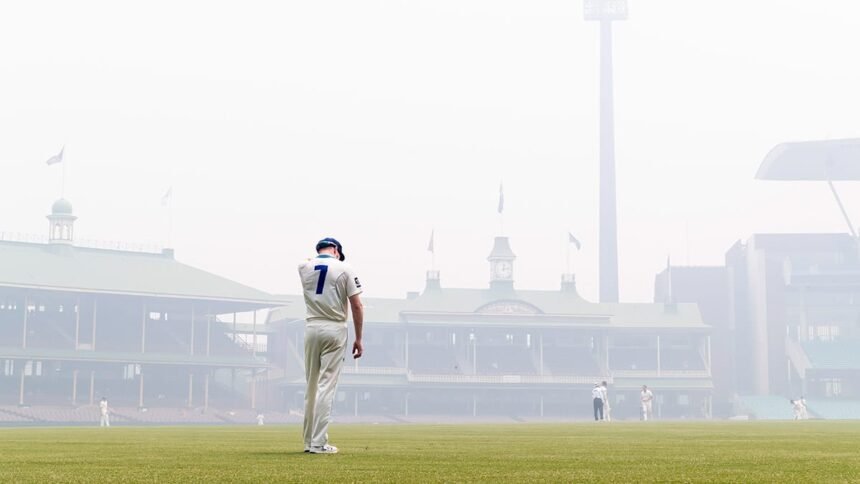Cricket’s Climate Crisis, , a sport deeply connected to weather conditions, is facing an unprecedented challenge—climate change. Rising temperatures, unpredictable rain patterns, and extreme weather events are altering how the game is played, scheduled, and even governed. This 2,000+ word investigative report explores:
-
How rising temperatures are affecting player health and performance
-
The economic impact of climate disruptions on cricket boards
-
Innovative solutions being tested to combat climate challenges
-
Which nations are most vulnerable to weather-related disruptions
-
The future of cricket in a warming world
Cricket’s Climate Crisis, For ongoing coverage on cricket and sustainability, visit Crickviews Climate Hub.
Chapter 1: The Data – How Climate Change is Already Affecting Cricket
Key Climate-Related Disruptions (2020-2024)
| Event | Impact | Financial Loss |
|---|---|---|
| 2023 IPL Heatwave | Matches delayed due to 45°C+ temperatures | $12M (broadcast & tickets) |
| 2024 England Floods | 3 Tests washed out (most since 2012) | $8M (ECB revenue) |
| Cyclone Gabrielle (NZ) | Canceled ODI series vs Sri Lanka | $3.5M (NZC loss) |
| Australia’s Bushfire Smoke | 2020 Sydney Test halted due to air quality | $1.2M (refunds & rescheduling) |
Player Health Risks
-
Heatstroke cases up 42% in day matches since 2018
-
Dehydration-related cramps now affect 1 in 5 fast bowlers in hot conditions
-
Air pollution reducing player stamina by 15-20% in cities like Delhi and Lahore
For real-time climate impact stats, visit Crickviews Weather Tracker.
Chapter 2: The Economic Fallout – How Boards Are Losing Millions
Revenue Losses Due to Climate Disruptions
| Board | Annual Loss (2024 Estimate) | Primary Climate Threat |
|---|---|---|
| BCCI (India) | $25M+ | Heatwaves, air pollution |
| ECB (England) | $15M | Increased rain disruptions |
| CSA (South Africa) | $8M | Droughts affecting pitch quality |
| BCB (Bangladesh) | $5M | Flooding during monsoon season |
Insurance Costs Skyrocketing
-
Match cancellation insurance up 60% since 2020
-
Player health coverage now includes heatstroke clauses
Chapter 3: Innovations to Combat Climate Challenges
1. Smart Stadiums & Pitch Tech
-
Retractable Roofs: Used in 7 major venues (e.g., Melbourne, Dubai)
-
Subsurface Cooling: Pipes under pitches to regulate temperature (trials in UAE)
-
Dew-Resistant Grass: New hybrid turf reduces moisture impact by 40%
2. Player Protection Measures
-
Cooling Vests: Worn during breaks (reduces core temp by 2-3°C)
-
Hydration Sensors: Real-time alerts for dehydration risks
-
Air Quality Monitors: Match stoppages if PM2.5 exceeds 150
3. Scheduling & Format Changes
-
More Day-Night Tests: 70% reduction in heat-related stoppages
-
Shorter T20 Leagues: Reducing April-June tournaments in South Asia
-
Regional Hubs: Neutral venues with stable climates (e.g., UAE, USA)
Cricket’s Climate Crisis, For tech deep dives, visit Crickviews Innovation Lab.
Chapter 4: Which Nations Are Most at Risk?
High-Risk Cricket Nations
| Country | Biggest Threat | Projected Impact by 2030 |
|---|---|---|
| India | Heatwaves (>50°C) | 30% more abandoned matches |
| England | Increased rainfall | 25% more drawn Tests |
| Australia | Bushfire smoke | 15% drop in attendance |
| Bangladesh | Monsoon flooding | 40% revenue loss in rainy season |
Most Climate-Resilient Nations
✅ New Zealand (mild temperatures, low pollution)
✅ UAE (controlled stadium environments)
✅ USA (indoor cricket facilities expanding)
Chapter 5: The Future – Can Cricket Adapt?
ICC’s 2024 Climate Action Plan
-
Carbon-Neutral Goals: 50% reduction by 2030
-
Sustainable Tours: Fewer long-haul flights, more regional series
-
Green Stadiums: Solar-powered venues (e.g., Bengaluru’s Chinnaswamy)
Will Climate Change Kill Test Cricket?
-
Threat: More rain-affected draws, declining attendance
-
Solution: More day-night Tests, reserve days for weather
The Rise of Indoor Cricket?
-
MLC’s Texas facility: First fully air-conditioned cricket stadium
-
Future Trend: More domed stadiums in extreme climates
Final Verdict: Cricket Must Evolve or Face Collapse
Cricket’s Climate Crisis, Climate change is no longer a distant threat—it’s already reshaping cricket. Boards must invest in adaptive technologies, smarter scheduling, and sustainable practices to ensure the sport survives.
Should cricket move to more climate-neutral venues? Vote on Crickviews Poll






